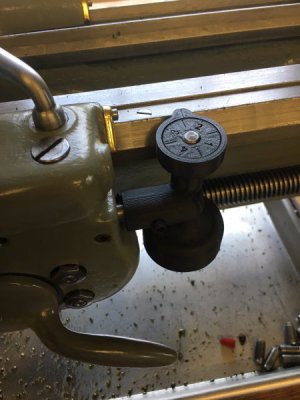OK. I finally got all the hardware I needed to go ahead and put the thread dial that Brino printed up for me together. Keep in mind nobody has ever accused me of under-building anything as I have a tendency to go a little overboard and possibly overthink things sometimes.
So I started this project by running a 5/16" reamer through the main body of the printed thread dial to clean the hole up and smooth it out. I don't know what size the printed hole was supposed to be but it worked out as though it was meant to be reamed 5/16". Simple operation on the drill press. I bought a 3' stick of 5/16" 12L14 and it was a tight fit in the reamed hole so I chucked the rod in the lathe and started working it down with some 220 grit sand paper. Got a real good fit.
Next piece was the attachment between the carriage and the thread dial. I am a little leary of the strength of the plastic holding enough tension with a set screw so I drilled and tapped all the way through the boss and pin to make sure that the dial should not be able to easily rotate (like I said, I overthink this stuff).
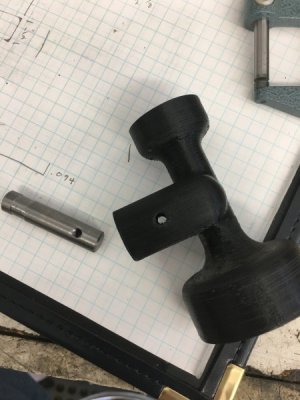
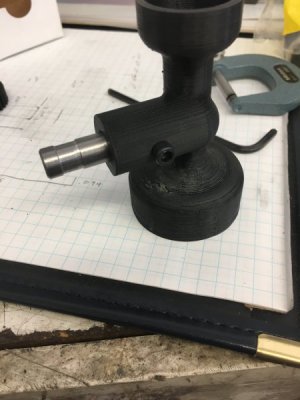
I had the same concern on attaching the gear to the shaft so it too was drilled and tapped all the way through to make sure it couldn't slip on the shaft. I also did not ream the ID of the gear or the dial itself but instead turned down each end of the shaft to make a tight fit on the gear and a not as tight slip fit on the dial. The dial end of the shaft got a flat filed in it for a set screw. I figured there is no strain on the dial so a set screw should be very adequate for that end and it gives me a little end play adjustment for the whole assembly. As for the dial part I had to turn the OD down a few thousandths because it fit pretty tight in the housing. I just put it on the shaft and tightened the set screw then set the compound to approximate the angle of the edge of the dial (it's actually a little curved but the angle worked fine) dialed it in in the 4 jaw and took a pass off it.
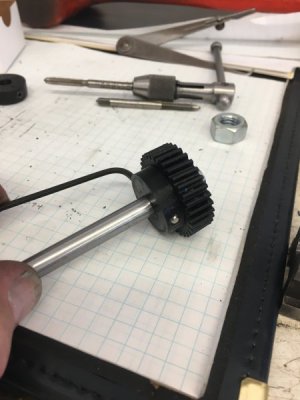
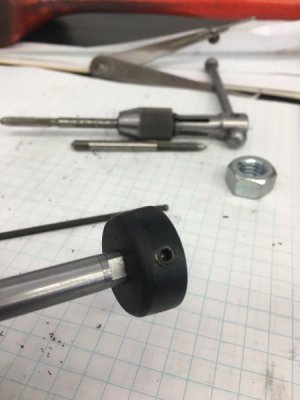
I chucked the body of the dial in the 4 jaw and used a boring bar to clean up the inside of the bottom of the housing where the gear rides. The printing was rough here from the support material that gets removed after printing.
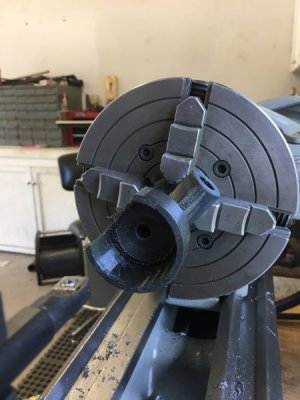
Final assembly and adjustment and it seems to work so far. I'll change some gears, grind a tool bit and try to do some actual threading tommorow and report back. Gear engagement looks pretty good.
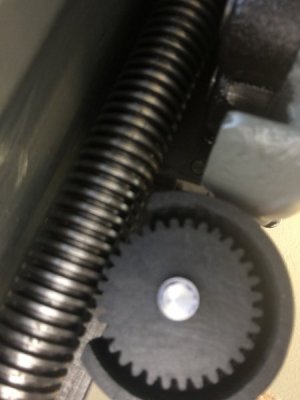
Again many thanks to Brino for printing and sending me the parts. I will probably paint the body to match the lathe (although the black doesn't look to bad) and paint in the numbers and lines.
